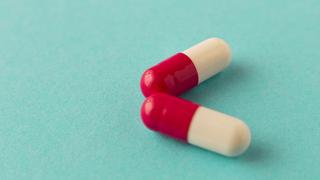“It is a very old bug and has evolved with us quite a bit,” says Rachit Agarwal, Associate Professor at the Department of Bioengineering, Indian Institute of Science, referring to Mycobacterium tuberculosis, a pathogen that kills 1.3 million every year.
Microbes mutate and develop resistance to existing drugs. When you develop new drugs, you need to test them.
Clinicians culture the bacteria on glass plates or petri dishes, but these do not properly mimic the 3D microenvironment inside lungs. Vishal Gupta, a PhD student explains the situation thus: “In a tissue culture plate, there are no extracellular matrix (ECM) molecules, and even if a very thin layer of ECM is coated on these plates, the lung cells ‘see’ the ECM on one side at best.”
To give those who culture the bacteria an environment closer to reality, researchers from the Department of Bioengineering, IISc, Bengaluru, have designed a 3D hydrogel culture system that “mimics the mammalian lung environment,” says a press release.
Jelly genius
Hydrogel is a material produced by carefully removing the liquids from a jelly, leaving a porous structure that has advantages such as resistance to extreme heat.
The 3D hydrogel developed by IISc scientists is made of collagen, a key molecule present in the ECM of lung cells. Collagen is soluble in water at a slightly acidic pH. As the pH increases, the collagen forms fibrils which cross-link to form a gel-like 3D structure. At the time of gelling, the researchers added human macrophages (immune cells involved in fighting infection) along with the tuberculosis causing pathogen. This entrapped both the macrophages and the bacteria in the collagen allowing researchers to track how the microbe infects the macrophages, the IISc write-up says. Using this set up, the team tracked the progress of an infection over 2-3 weeks. They found that the mammalian cells stayed viable for three weeks. Contrast this with just about a week when they did it by conventional culture methods. Further, the researchers carried out RNS sequencing of the lung cells that grew in hydrogel. They found that the cells were very similar to actual human samples.
The team also tested the effect of pyrazinamide — one of the four most common drugs given to TB patients. They found that even a small amount (10 µg/ml) of the drug was quite effective in clearing out the TB pathogen in the hydrogel culture, says IISc.
Previously, scientists have had to use large doses of the drug — much higher compared to concentrations achieved in patients — to show that it is effective in tissue culture. “Nobody has shown that this drug works in clinically relevant doses in any culture systems... Our setup reinforces the fact that the 3D hydrogel mimics the infection better,” observes Rachit Agarwal.










Comments
Comments have to be in English, and in full sentences. They cannot be abusive or personal. Please abide by our community guidelines for posting your comments.
We have migrated to a new commenting platform. If you are already a registered user of TheHindu Businessline and logged in, you may continue to engage with our articles. If you do not have an account please register and login to post comments. Users can access their older comments by logging into their accounts on Vuukle.